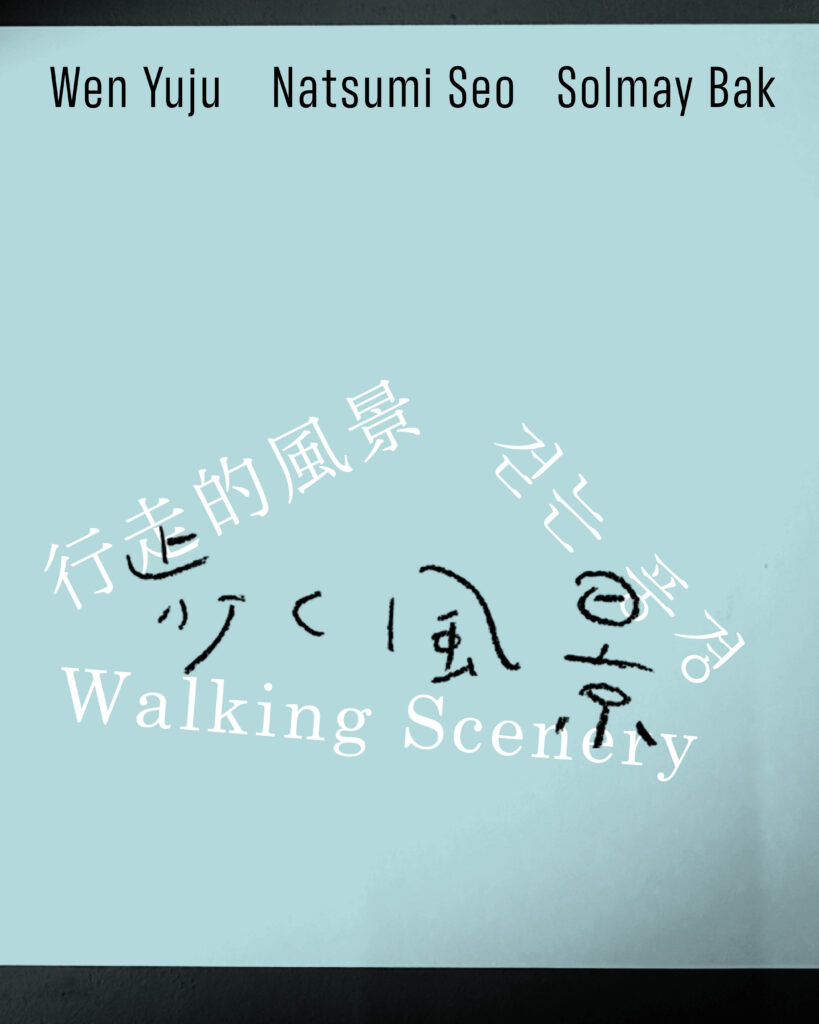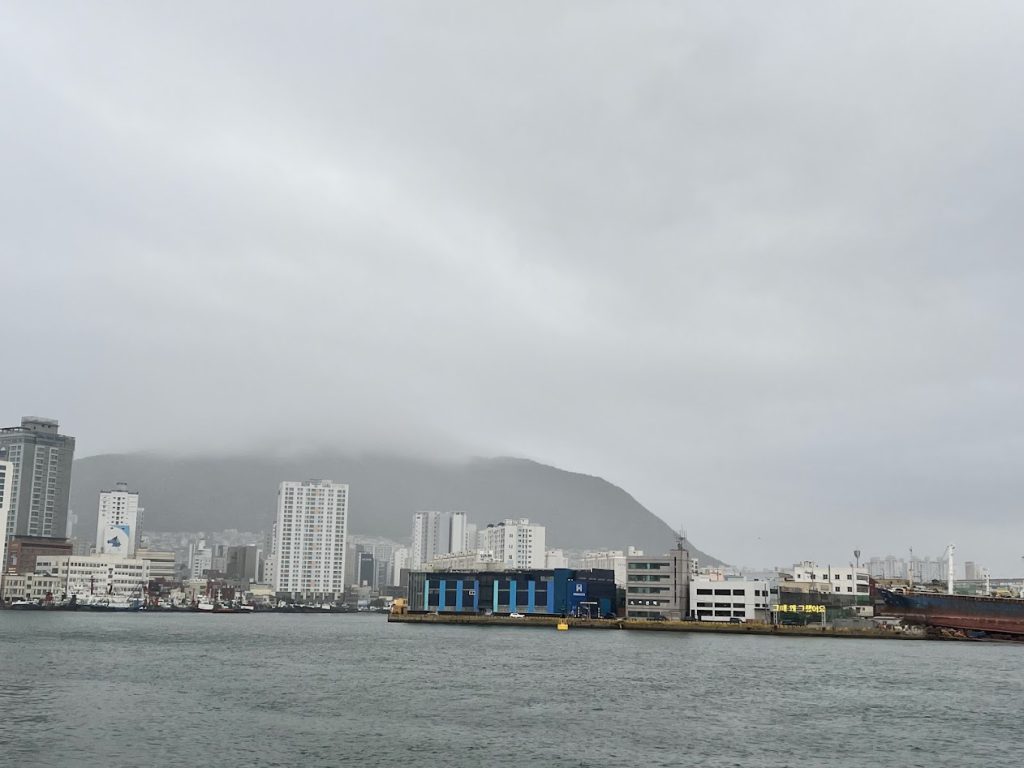20250501
Walking Scenery
A person’s memory is not in their head, it is in the landscape......
The landscape, remembered and recorded through human eyes, is both an accumulation of the history of a land and a trigger for personal memories. It is one of the ways that connects the past to the present. Walking, in particular, is an exercise that is more connected to the individual’s body. It is different from bird’s-eye views, car or train windows, and has given rise to a great deal of creativity and contemplation, as it is directly connected to individual thoughts and inspirations. The creativity of walking is described in Rebecca Solnit’s Wanderlust: A History of Walking. On the other hand, in Tokyo and other East Asian urban areas, the landscape changes in a short period of time due to constant development, with buildings being rebuilt in about 40 years in Japan and as early as 20 years in Greater China. This has led to societies forgetting the memory of the land. However, the Asian region has had a turbulent history from the postwar period to the recent past. In particular, neighboring South Korea declared democracy in 1987, while martial law continued in Taiwan until the same year, followed by rapid urbanization. In other words, although only 30 to 40 years have passed since the landscape was lined with skyscrapers as it is today, a fragment of the past still remains in the crevices of the city.
“Walking Scenery” is an attempt to connect postwar history and the present through the scenes of three places by three female artists of different origins, Yuju Wen (Taipei), Natsumi Seo (Tokyo), and Solmay Bak (Gwangju), and to pass on the stories through their expression. Each artist will visit Tokyo, Taipei, and Busan, walk around, and touch upon the unfinished postwar history of the region. Workshops will then be held in various locations, where participants will discuss with each other how to connect the baton of history. Finally, the creative work that emerges from these experiences and workshops will be performed in the form of readings performances and a discussion. The written texts themselves are also creations, and they will eventually become the seed for another form of works.
It is not easy to share and discuss modern and contemporary history with Korea and Taiwan, which were once colonized by Japan. Meanwhile, wars and conflicts continue to occur in Ukraine, Gaza, and other parts of the world. That is why we need opportunities to learn about the history of various regions in the recent past, how it affects us today, and how we can connect it to the future.
Creation can represent local issues and at the same time be something that others can relate to. Walking Scenery” will grow into a small but sure way to share the scenery and history that travelers immerse themselves in as they walk, and send it back to others in the form of art.
Organized by: soon ltd.
Participating artists: Wen Yuju, Natsumi Seo, Bak Solmay
Supported by: Supported by Arts Council Tokyo (Tokyo Metropolitan Foundation for History and Culture)

Dates:
Field survey and workshop by participating artists
– May 2025: Taipei field survey and workshop (Wen Yuju)
– June 2025: Tokyo field survey (Bak Solmay)
– August 2025: Busan field survey and workshop (Natsumi Seo)
Reading performance by participating artists and public symposium
Held in December 2025 in Tokyo (Venue: TBA)
Women artists of Japanese, Taiwanese and Korean origins
Each of the three artists has been expressing his or her contemplation through walking.
Wen Yuju, who was born in Taipei, Taiwan, and moved to Japan with her family when she was 3 years old, says that the scenery of Tokyo, where she has lived for about 40 years, is undergoing drastic change due to redevelopment, and this is when she first felt a sense of nostalgia for the buildings and bayfront scenery built around the bubble era in Japan. At the same time, she feels both relieved and mixed feelings about the landscape of Taipei’s remaining Japanese colonial-era buildings.
Natsumi Seo, a Tokyo native who spent about 10 years in Rikuzentakata and Sendai after the Great East Japan Earthquake, wrote her thoughts on Twitter while taking a walk every night and compiled them into a book titled Awai yuku koro (The fleeting) in 2017. Currently, she is expanding her interest in passing on the memory of war in Hiroshima and Okinawa, and continues to conduct workshops and fieldwork. At the core of her expression is walking through strange lands as a traveler and weaving the words of the people she encounters.
Bak Solmay, a native of Gwangju, South Korea, says that taking daily walks is an essential part of her creative process. In Future Walking Practice, which has also been translated into Japanese, the protagonist sets up a temporary residence in Busan, walks around the city, and in the scenery she sees, tells the story of the arson case at the American Cultural Center in Busan (1982), which started with the Gwangju Incident (1980). In contemporary Korean literature, there have been many attempts to retell the tragedies of modern history through creative writing, and Bak is one of the figures in this field. She continues to be interested in Busan, and this time we will be working on a project set in Busan.
History has always treated capitalized narratives as canonical history, and the perspectives of individuals, especially women, as alternatives that do not fit into this canon. Understanding this situation, the participating artists are attempting to excavate local memories from the shifting landscapes of East Asia and connect them to the future. In “Walking Landscape,” the artists will take as a starting point the landscapes they walk through and remember in Asia, where the urban landscape is continually being renewed, to reconsider the recent past and explore forms that can be shared as new forms of expression. When small narratives by each artist are accumulated, a new place may be created where we can talk with each other on a closer level.

